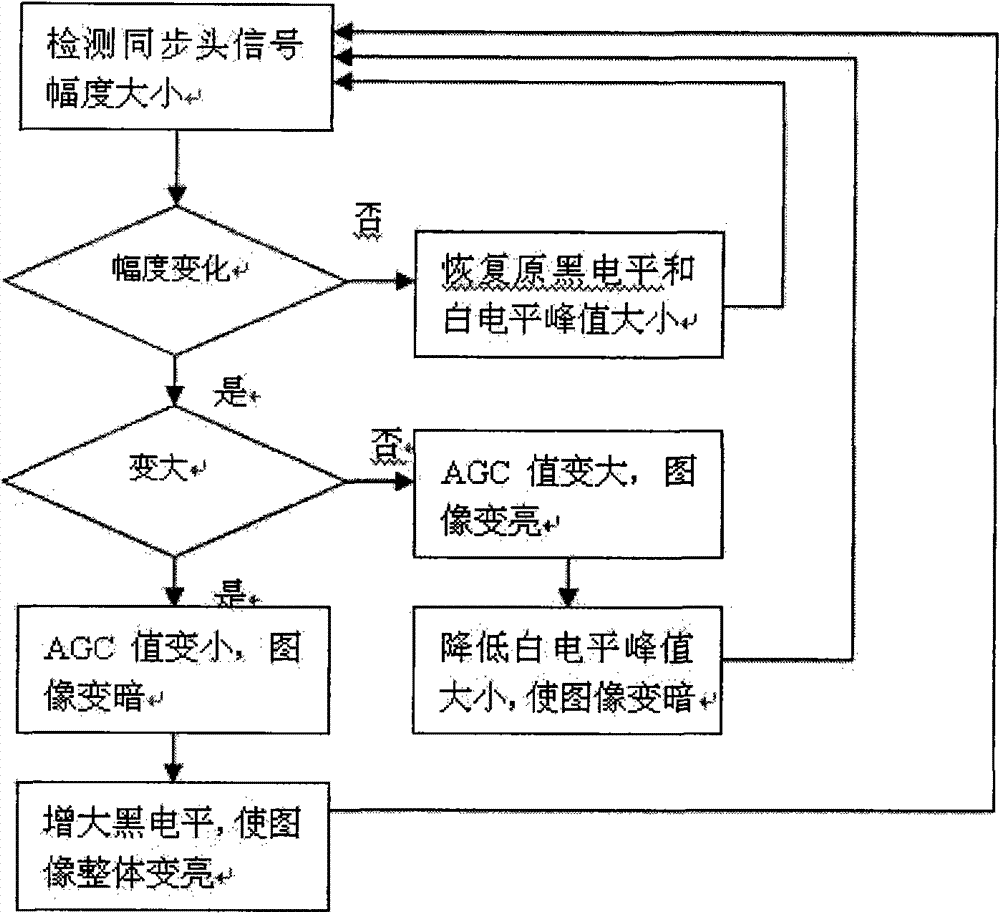Method for processing TV nonstandard signal
A processing method and TV technology, applied to color TV parts, TV system parts, TVs, etc., can solve problems such as image brightness changes, and achieve the effect of solving the problem of image brightness changes
- Summary
- Abstract
- Description
- Claims
- Application Information
AI Technical Summary
Problems solved by technology
Method used
Image
Examples
Embodiment Construction
[0009] In order to make the object, technical solution and advantages of the present invention clearer, the present invention will be further described in detail below in conjunction with the accompanying drawings and embodiments. It should be understood that the specific embodiments described here are only used to explain the present invention, not to limit the present invention.
[0010] refer to figure 1 As shown, the processing method of the non-standard TV signal of the present invention detects the amplitude of the synchronous head of the input signal, and sets the brightness and darkness of the image signal according to the amplitude of the synchronous head. It keeps detecting the changes in the amplitude of the signal sync head, and once an abnormality is detected, it will deal with it accordingly.
[0011] The amplitude of the synchronization head of the detected input signal is obtained by reading the value of the automatic gain control (AGC), and the value of the a...
PUM
 Login to View More
Login to View More Abstract
Description
Claims
Application Information
 Login to View More
Login to View More - R&D
- Intellectual Property
- Life Sciences
- Materials
- Tech Scout
- Unparalleled Data Quality
- Higher Quality Content
- 60% Fewer Hallucinations
Browse by: Latest US Patents, China's latest patents, Technical Efficacy Thesaurus, Application Domain, Technology Topic, Popular Technical Reports.
© 2025 PatSnap. All rights reserved.Legal|Privacy policy|Modern Slavery Act Transparency Statement|Sitemap|About US| Contact US: help@patsnap.com

